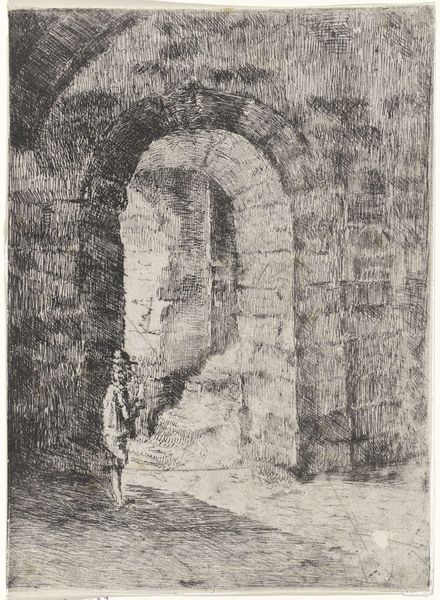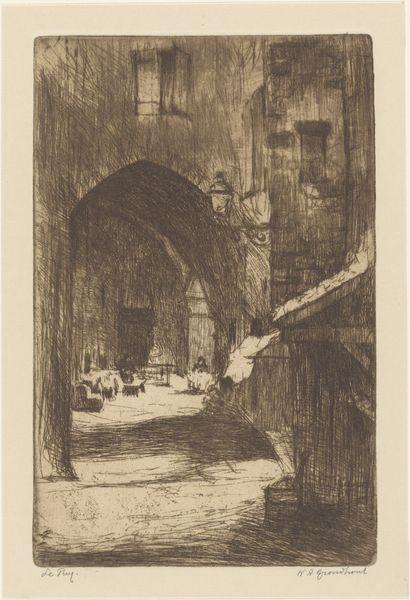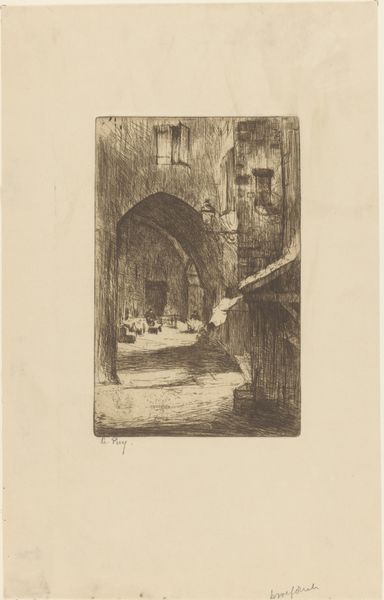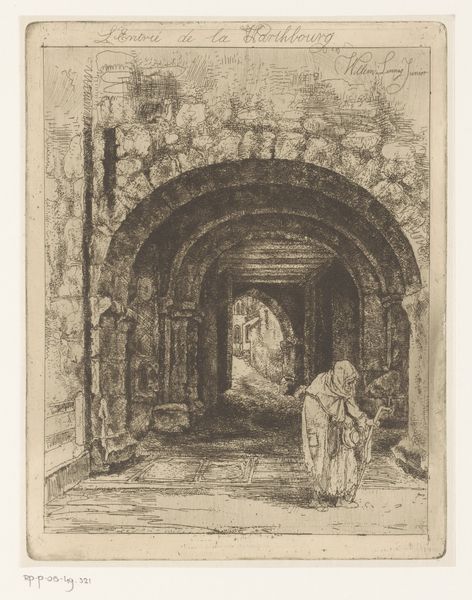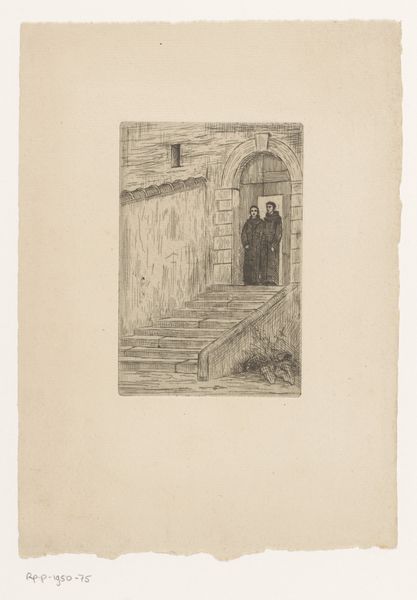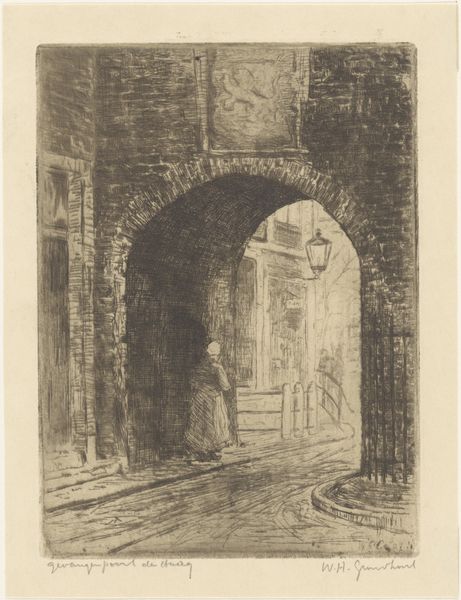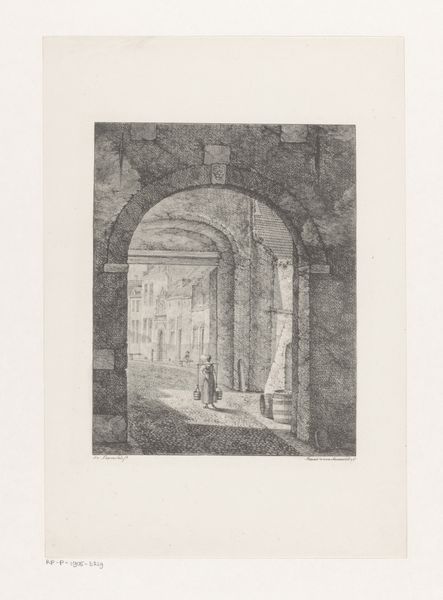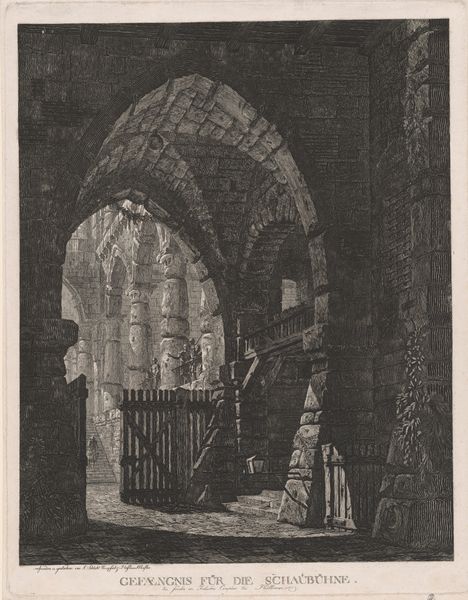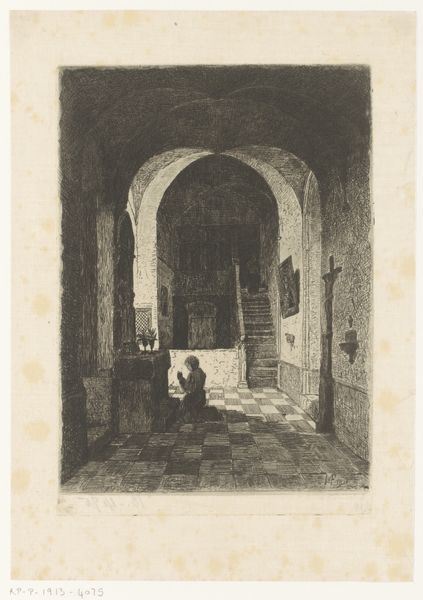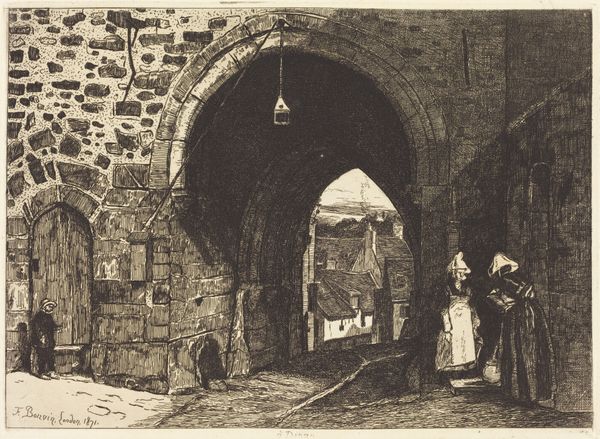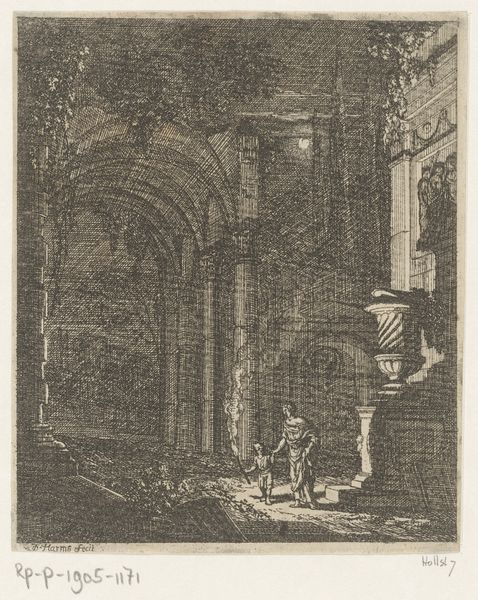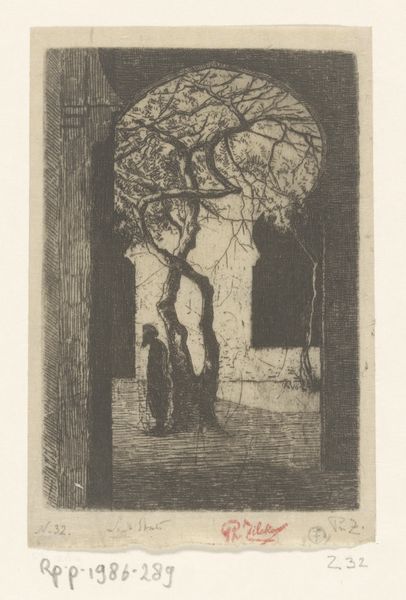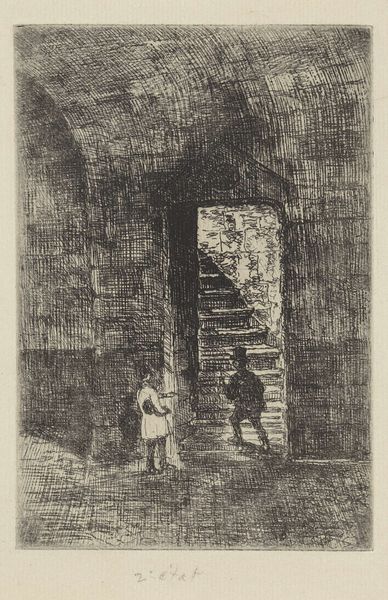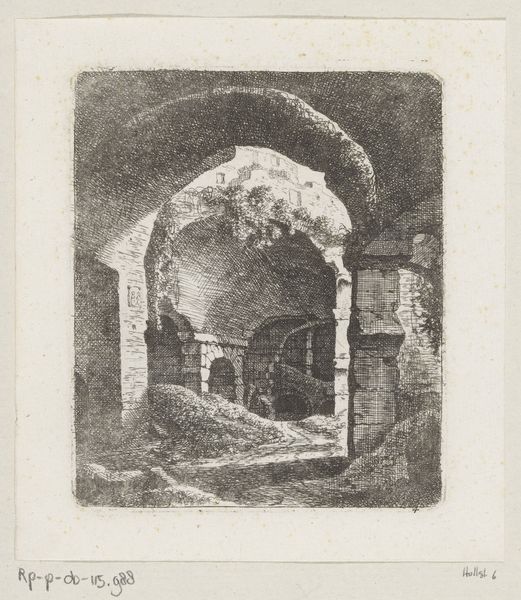
print, etching, architecture
# print
#
etching
#
landscape
#
architecture
Dimensions: height 240 mm, width 142 mm
Copyright: Rijks Museum: Open Domain
Editor: So this is Willem Adrianus Grondhout’s “Chartres,” an etching made sometime between 1888 and 1934. There’s this figure walking through what looks like a grand stone archway into a courtyard, all rendered in these delicate, scratchy lines. It’s got a kind of solemn, almost theatrical mood to it. What strikes you most about this image? Curator: What intrigues me is how Grondhout uses architecture to frame not just physical space, but social space. Cathedrals, particularly one like Chartres with its loaded religious and political history, aren’t simply buildings. They are stages. Editor: Stages for what? Curator: Think about the role of the church, particularly in the late 19th and early 20th centuries. It was a powerful force, but also increasingly challenged by secularism, by new social movements. This lone figure... is it a priest? A pilgrim? Or simply someone seeking refuge or contemplating the past? Is he a social actor, defined by his purpose in this institutional setting? His role is deliberately ambiguous, isn't it? Editor: So the image is less about the architecture itself and more about the… tension? The push and pull between tradition and modernity, perhaps? Curator: Exactly. The print is a reflection of the social and political role of this very building – the cathedral itself - in the modernizing world. Etchings like this were often circulated among a bourgeois class, keen to possess and interpret these monuments of power and faith. Did you notice the artist made 10 of these? Editor: Ah, I see. The number 1/10 is signed in the lower corner of the print. I hadn’t considered the print as an accessible work that connected to the wealthy. Now I do. Curator: Precisely! That the cathedral is re-presented through printed imagery allows us a unique window into considering the values of this modernizing public and the social significance of religious space. What do you think? Editor: Definitely given me a lot to consider about art’s place in a shifting world, thanks.
Comments
No comments
Be the first to comment and join the conversation on the ultimate creative platform.
